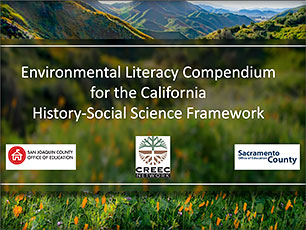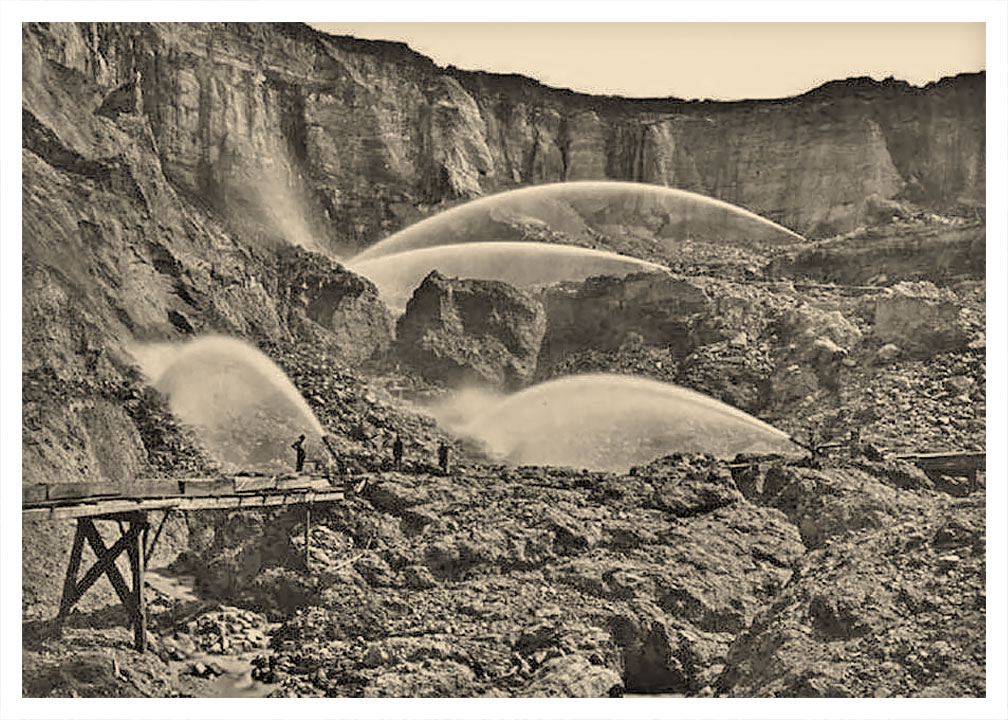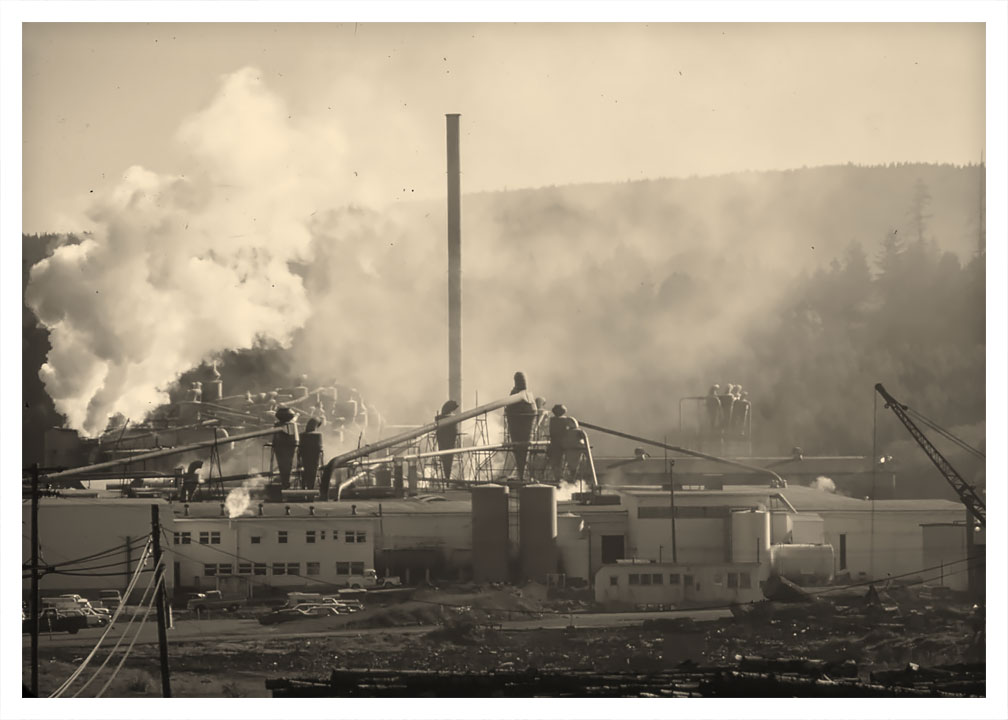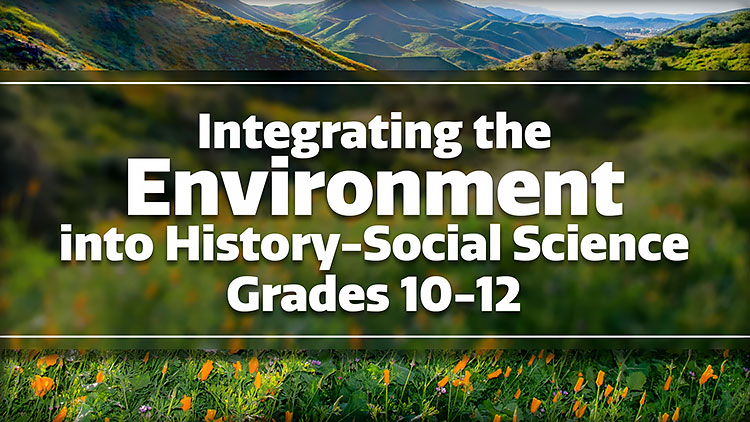Overview
Human societies have always shaped and been shaped by the natural environment. In 2004 California recognized this with the adoption of the Environmental Principles and Concepts (EP&Cs). The 2016 California History-Social Science Framework incorporates the EP&Cs within each grade-level, content narrative.
Appendix B of the California History-Social Science Framework identifies Science, Technology, and the Environment as one of the key themes in the history and geography classroom. The concise narrative of Appendix B shows how the environment has played a starring role in human history. The story of humans and their environment begins in the early Paleolithic era when humans, armed with spears or bows, were able to devastate populations of large species such as mammoths, giant kangaroos, and sloths. It continues through the development of agricultural practices that allowed humans to draw increased resources from the Earth resulting in growing populations and career specialization. The story continues even today as the effects of rapid technological changes have speeded up deforestation and overexploitation of land.
As history-social science educators it is vital we develop our students’ environmental literacy through showing its consistently integral nature to the human story. By identifying natural places within the standards at each grade-level for instruction that incorporates the Environmental Principles and Concepts and providing guidelines for engaging pedagogical strategies, these helpful resources to consider are meant to assist teachers in that charge.
In partnership with the San Joaquin County Office of Education, the Sacramento County Office of Education is creating resources for educators to infuse environmental literacy into their history-social science instruction.
Environmental Literacy Compendium
 In partnership with the San Joaquin County Office of Education, the Sacramento County Office of Education created the Environmental Literacy Compendium for the California History-Social Science Framework
In partnership with the San Joaquin County Office of Education, the Sacramento County Office of Education created the Environmental Literacy Compendium for the California History-Social Science Framework ![]() (1.2 MB PDF). The compendium contains selected sections from each grade level of the Framework that are particularly suited to the integration of the Environmental Principles and Concepts. Alongside these excerpts from the Framework are instructional suggestions designed to aid teachers as they infuse environmental instruction into their scope and sequence. The instructional suggestions are not fully developed lesson plans, but are meant to provide teachers with a foundation on which to build a lesson. Below the instructional suggestions the EP&Cs addressed are identified and, when appropriate, connections to NGSS Performance Expectations. This is a free resource available to all teachers and is available for download and print.
(1.2 MB PDF). The compendium contains selected sections from each grade level of the Framework that are particularly suited to the integration of the Environmental Principles and Concepts. Alongside these excerpts from the Framework are instructional suggestions designed to aid teachers as they infuse environmental instruction into their scope and sequence. The instructional suggestions are not fully developed lesson plans, but are meant to provide teachers with a foundation on which to build a lesson. Below the instructional suggestions the EP&Cs addressed are identified and, when appropriate, connections to NGSS Performance Expectations. This is a free resource available to all teachers and is available for download and print.
Environmental Literacy Compendium Videos
Helpful Resources to Consider
Appendix B of the California History-Social Science Framework ![]() (263k PDF)
(263k PDF)
Appendix B identifies seven key themes in history and geography. On pages 668-673, the Framework describe Key Theme 6: Science, Technology, and the Environment. Teachers can use this section of Appendix B to help develop an environmental lens to their history-social science instruction.
Appendix G of the California History-Social Science Framework ![]() (278k PDF)
(278k PDF)
The History-Social Science Framework identifies the supplemental instructional materials available from the Education and the Environment Initiative as a resource for integrating the Environmental Principles and Concepts into history-social science instruction. Appendix G provides teachers with a brief summary of each unit.
California Education and the Environment Initiative
EEI, a statewide initiative, provides educators with professional learning and instructional materials that integrate the Environmental Principles and Concepts into traditional academic subjects like history, science, and ELA. EEI offers twenty K-12 history-social science units, free of charge.
California History-Social Science Project
The CHSSP has a wealth of resources for history-social science teachers, including a repository of current events related to the environment with teaching tools to provide historical context. This resource is updated regularly.
California Regional Environmental Education Community Network
CREEC is a California Department of Education program that fosters partnerships across all regions of California to promote environmental education and environmental literacy. CREEC provides teachers with access to high quality professional learning and resources.
California Science Teachers Association
CSTA has developed a position statement on climate change, vetted lesson sequences, and written a white paper on environmental literacy for California students. In addition, CSTA links to resources developed by members in regions throughout the state.
San Diego County Office of Education
SDCOE has curated a large selection of resources related to Environmental Literacy in the classroom. These resources were developed through collaboration by teachers, scientists, community partners, and SDCOE.
Ten Strands
Ten Strands works to provide teachers with high quality instructional materials with the goal of raising environmental literacy for all California students K-12. Ten Strands’ resources address the Common Core, Next Generation Science, History-Social Science, and English Language Development standards with the goal of infusing education on the environment into core subjects.






